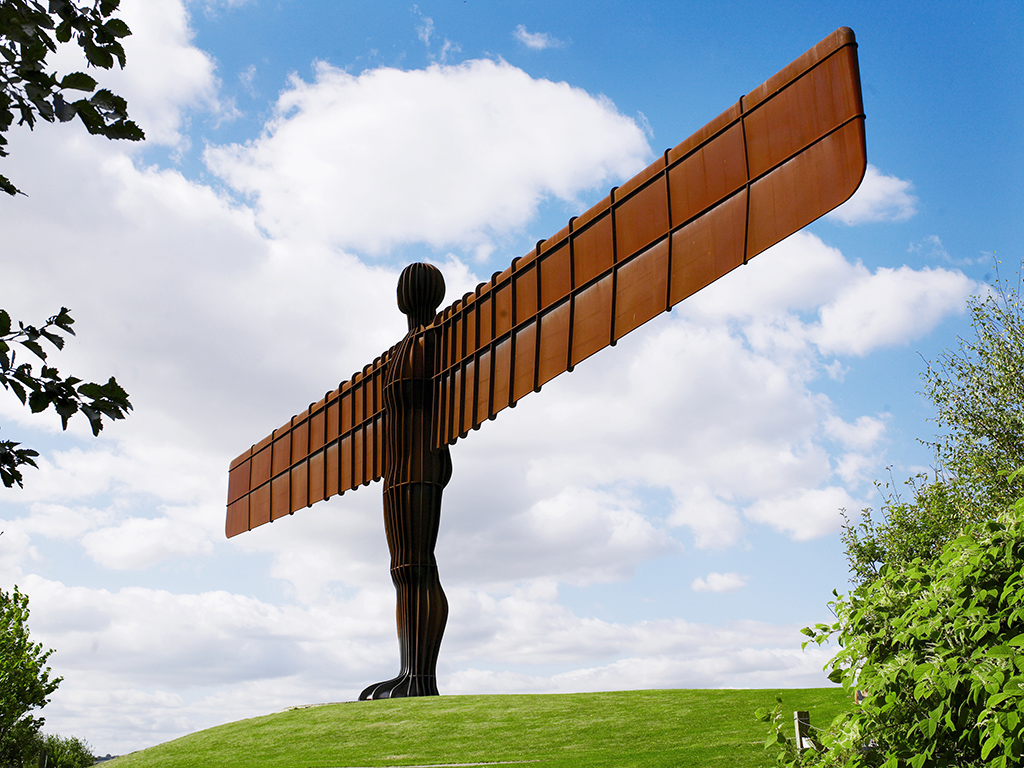Standing tall and majestic against the backdrop of the North East of England, the “Angel of the North” is a monumental sculpture that has captivated the hearts and minds of millions since its unveiling in 1998. Created by acclaimed British sculptor Antony Gormley, this iconic work of art has become a symbol of resilience, hope, and collective identity for the people of the United Kingdom. In this exploration, we delve into the history, significance, and enduring legacy of this awe-inspiring masterpiece.
The Vision Behind the Angel:
Antony Gormley conceived the idea for the “Angel of the North” in the early 1990s, envisioning a colossal sculpture that would serve as a beacon of hope and inspiration for the people of the North East of England. Inspired by the region’s industrial heritage and natural landscape, Gormley sought to create a work of art that would embody the spirit of renewal and transformation, symbolizing both the resilience of the human spirit and the enduring power of creativity.
The Design and Construction:
Standing at a towering height of 20 meters (66 feet) and boasting a wingspan of 54 meters (177 feet), the “Angel of the North” is an imposing presence that commands attention and reverence. Constructed from steel plates weighing a staggering 200 tonnes, the sculpture’s distinctive silhouette is characterized by its outstretched wings and elongated form, evoking a sense of flight and ascension. Despite its massive scale, the “Angel” exudes a sense of grace and serenity, inviting viewers to contemplate its significance and reflect on their own place in the world.
Symbolism and Meaning:
The “Angel of the North” serves as a potent symbol of hope, resilience, and collective identity for the people of the United Kingdom. Its location in Gateshead, overlooking the A1 motorway, ensures that it is visible to millions of travelers passing through the region, serving as a welcoming beacon that signals arrival and departure, transition and transformation. As a guardian angel watching over the landscape, the sculpture represents a source of comfort and protection, reminding viewers of the enduring strength of the human spirit in the face of adversity.
Beyond its symbolic significance, the “Angel of the North” also holds personal and emotional resonance for many individuals. For some, it serves as a reminder of loved ones lost, a tribute to the resilience of the human spirit, and a beacon of hope for the future. For others, it represents a sense of pride and belonging, a symbol of community and shared heritage that transcends geographical boundaries and cultural divides. Whatever the interpretation, the “Angel” continues to inspire awe and wonder, leaving an indelible mark on all who encounter it.
Legacy and Impact:
Since its unveiling in 1998, the “Angel of the North” has become one of the most iconic and beloved works of public art in the United Kingdom. Its enduring popularity has led to a thriving tourism industry in the North East of England, with visitors flocking from far and wide to catch a glimpse of this monumental masterpiece. Moreover, the “Angel” has sparked a renewed interest in public art and urban regeneration, inspiring communities across the country to embrace creativity and innovation as catalysts for positive change.
Antony Gormley’s “Angel of the North” stands as a testament to the enduring power of art to inspire, uplift, and unite. With its monumental scale, symbolic significance, and profound emotional resonance, the “Angel” continues to captivate the hearts and minds of millions, serving as a timeless tribute to humanity’s indomitable spirit. As it gazes out over the landscape, its outstretched wings embracing the sky, the “Angel of the North” reminds us of the boundless potential of the human imagination and the transformative power of art to shape our world for generations to come.



